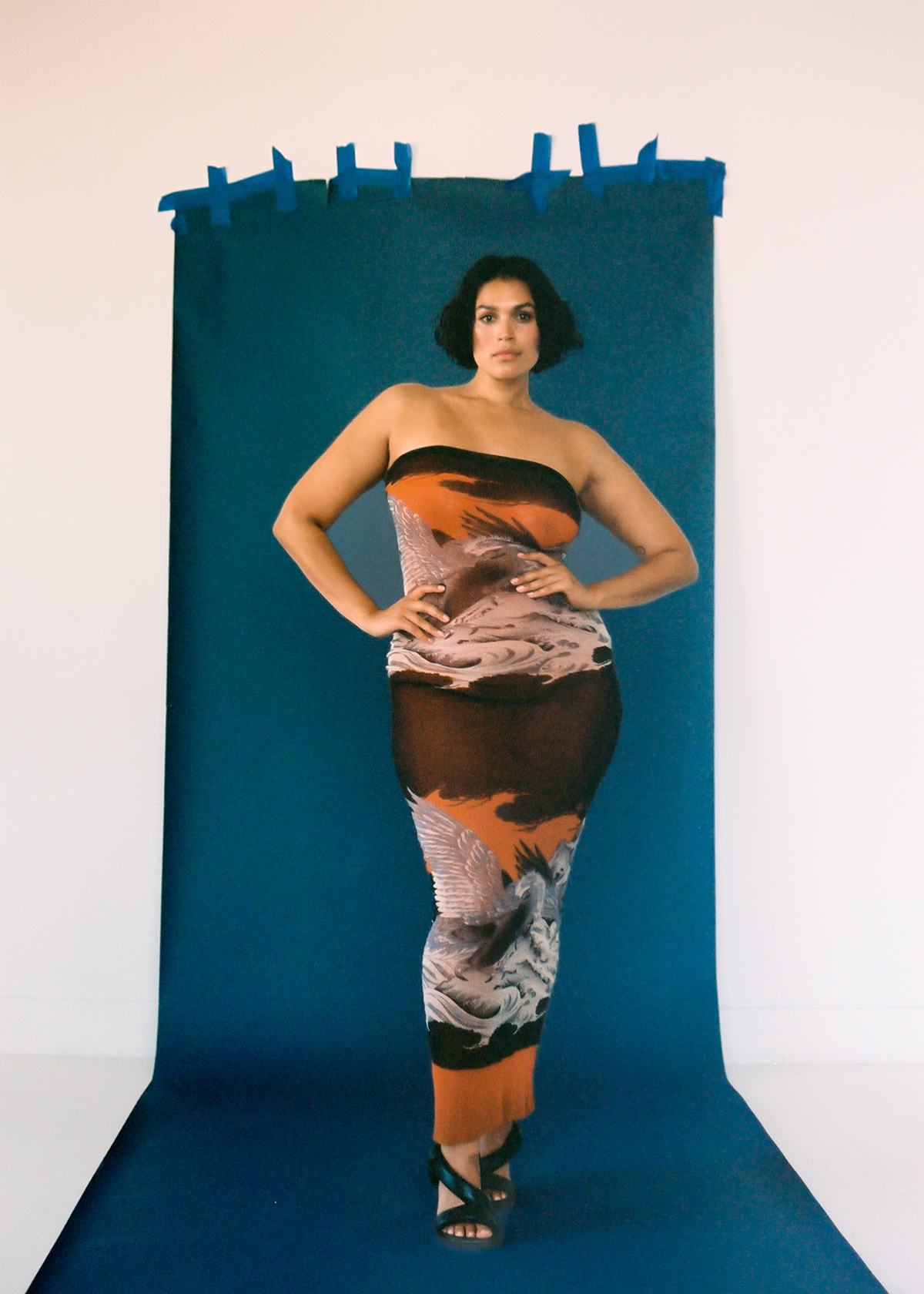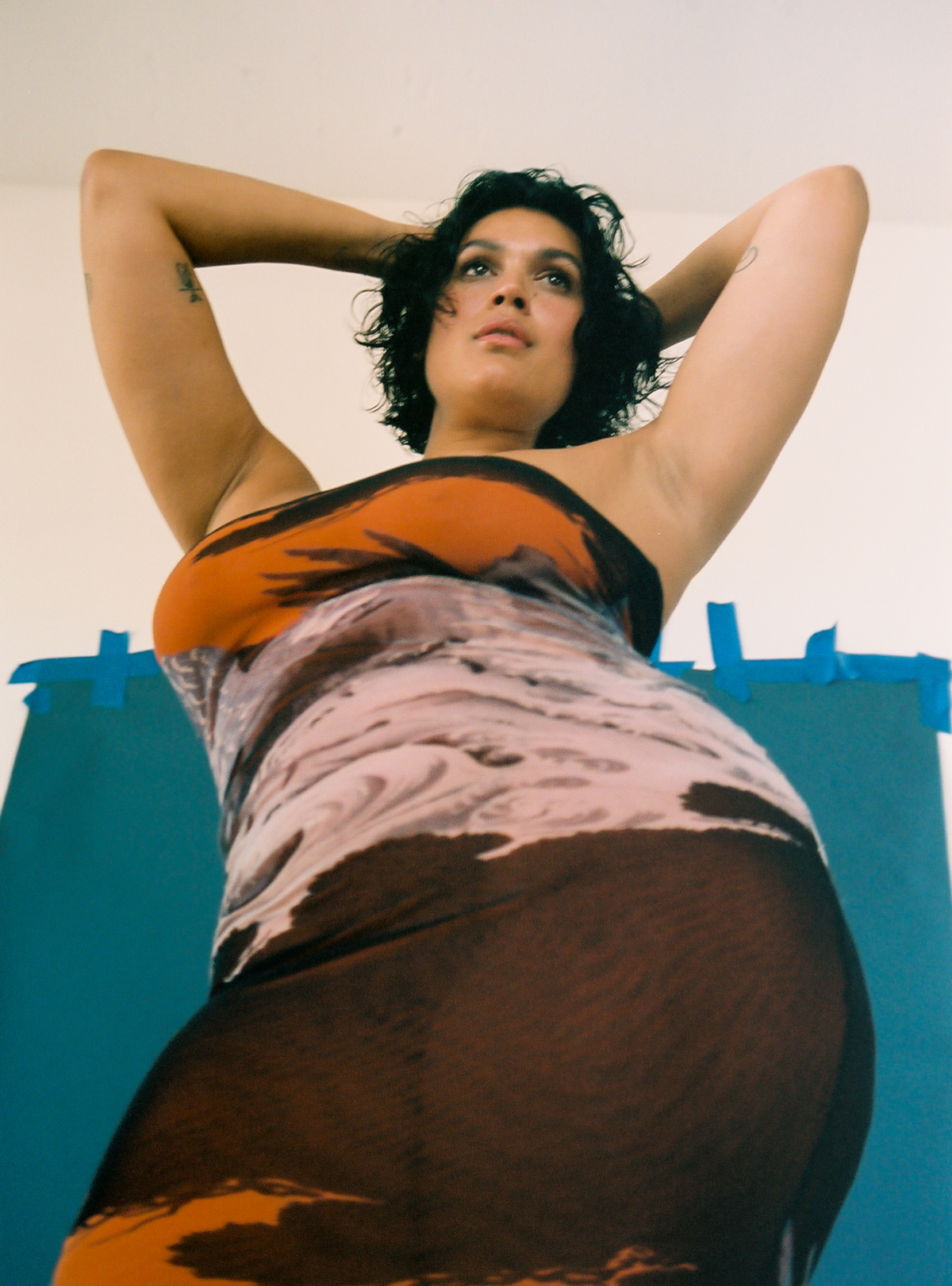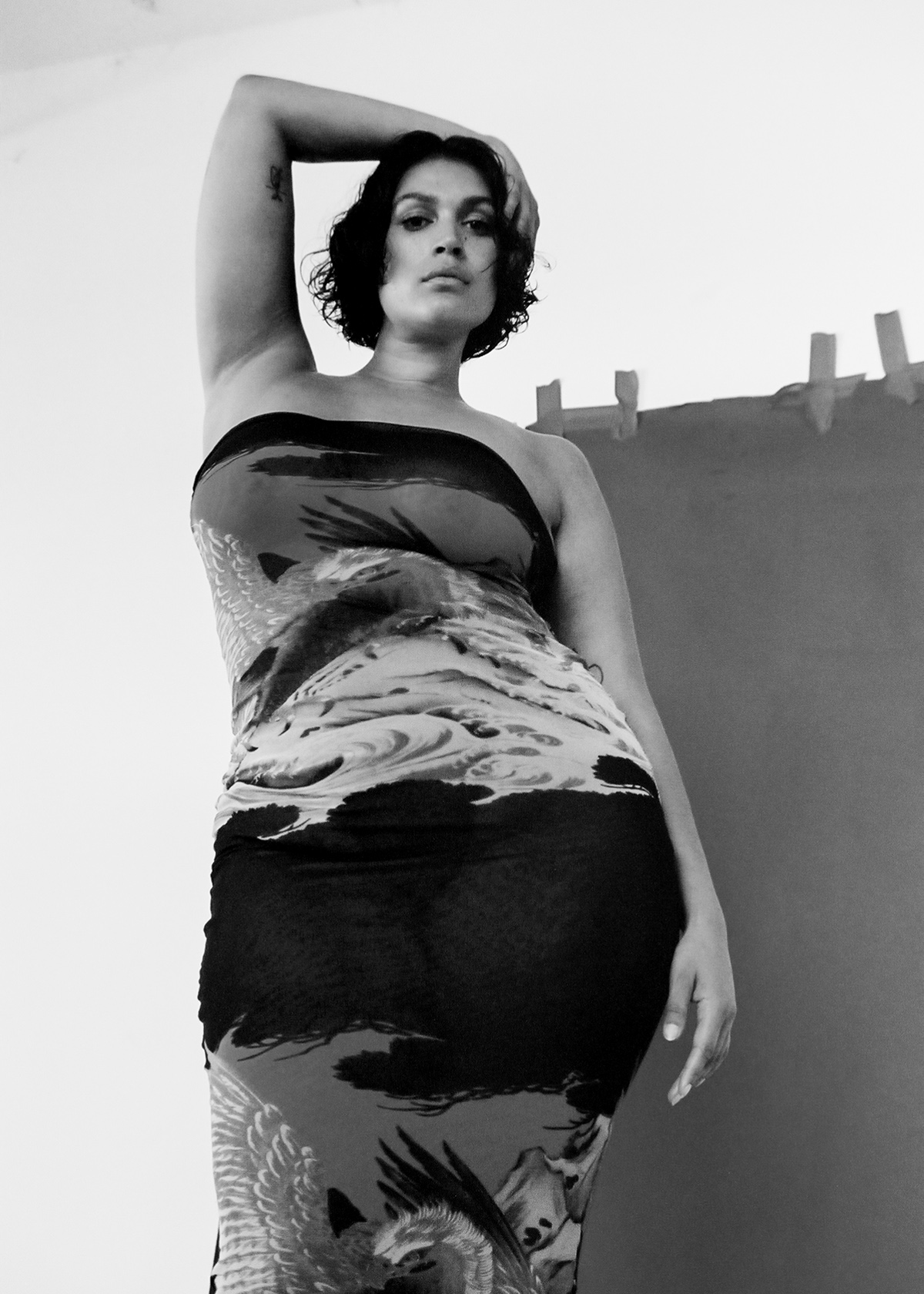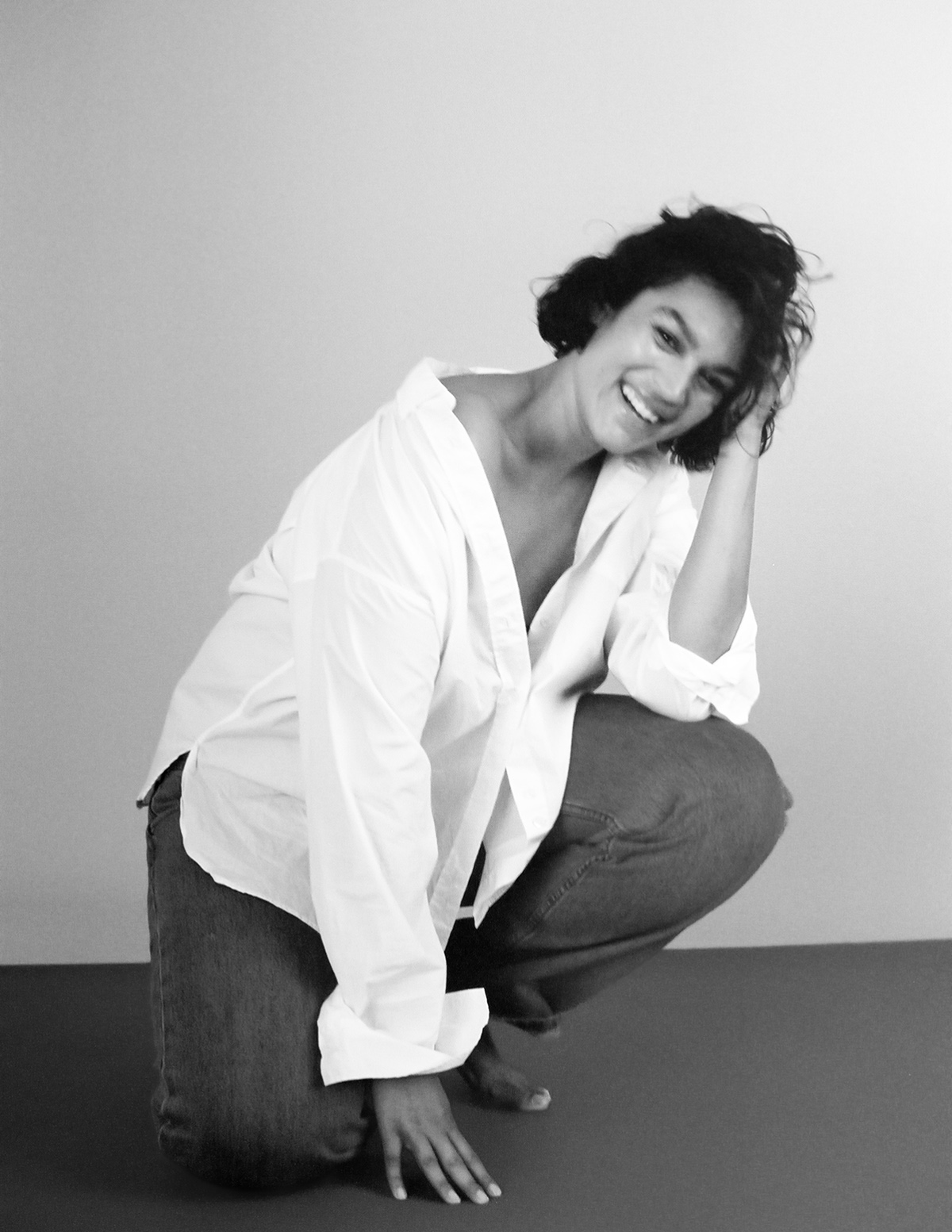
As Jennifer Atilémile’s modeling career continues, so does her history of breaking boundaries and debunking stereotypes. Shooting for Victoria’s Secret and this year’s Sports Illustrated Swimsuit Issue has elevated her career to new heights, but she isn’t merely riding the wave of her own success. Instead, she is hyper-aware of her platform, using it in every way she can to advocate for women’s equality, labor rights in the fashion industry, and doing away with the “curve model” designation once and for all.
“If you want to look at my body,” Atilémile says, “You’re also going to listen to what I have to say.” She has seen that promise through, speaking on international stages like the Forbes Women’s Summit about the power of representation and the importance of spotlighting the stories of those the world has historically silenced. We sat down with Atilémile to talk about her career, her advocacy, and why “curve models” are just models. Read our interview with Jennifer Atilémile below.

What was life like growing up in Melbourne?
Melbourne is an amazing city. It’s quite a cosmopolitan center of Australia. There’s good food, amazing theatre, art, sports – I guess that’s the reason they call it a mini–New York. There’s just so much culture.
How were you scouted as a model?
I was scouted waiting in line for Australia’s Next Top Model, for a modeling development school – which are not legitimate ways to become a model; you should never have to pay to become a model – but I went to their school and was offered to be signed by two agencies at the end of the course. However, I turned the offers down because I was already underweight and at the beginning of an eating disorder, so my mom stepped in because I was under 18. It wasn’t until I was completing my undergraduate degree later on that I thought I could try again.
You continued modeling while completing two master’s degrees in Journalism and International Relations. How did you balance your passion for education and your career in modeling?
I honestly don’t know if I could say I balanced it, but I’m proud that I survived it! For me, the opportunity to model and my master’s degrees came at similar times, and I thought it wouldn’t hurt to say yes to both. That part of my life is a bit of a blur. I was figuring myself out a lot, but I do remember working the evening shift at a media monitoring company and then getting on a flight the next morning to do a photoshoot and writing my essays at the airport. Sometimes when you want to make something work, you just find a way!
You are also passionate about gender equality, representation, and environmental sustainability. What role has your commitment to social justice issues played in your career?
Firstly, I just don’t think I’d be me if I didn’t care as much as I did. When I was completing my master’s degree, I interned at the Women’s Gender, Peace, and Security Institute at Monash University. If I wasn’t a model, I probably would have pursued something in that career field because of everything I’ve learned from my academic background, as well as my life experience growing up in Australia as the daughter of a Black man. Seeing the way my dad and brother were treated, then moving to the US and seeing the Black experience there, to me, it’s a no-brainer to stand up and be vocal about social justice issues, especially now that I have a platform where people will listen. I was recently invited back to Australia to speak at the Forbes Women’s Summit, where my panel spoke about the power of representation, and I spoke with other women about how important it is to hear the stories of those whose stories don’t usually get heard. If I wasn’t as vocal about these issues since the beginning, I wouldn’t have been given these opportunities to speak on such a large scale. It’s as simple as trying to make sure everyone is afforded the same opportunities regardless of who they are and where they come from. I’ll never stop fighting for that.
What was it like to represent your country as Victoria’s Secret’s first-ever Australian curve model in 2020?
I’ve said in a lot of interviews that to be the first to do anything is incredibly special. I made it my mission to fight for greater diversity and representation, not just in Australia but globally. To be recognized and celebrated for who I am by such an iconic name just made me feel like I was really on the right track. I remember I was hesitant to agree to the shoot because of their pushback on inclusivity for so long, but I’m so glad I said yes because it really catapulted my career.

How does it feel to have global campaigns with Maybelline and Clarins?
It’s truly an honor. I see every major campaign I book as a win for representation everywhere. We all grew up with Maybelline ads on our televisions and in magazines. It was a real pinch-me moment to walk into a CVS and see my face in the makeup aisle. Clarins is the same – I now see myself sometimes at the airport because I travel so much for work! I have French citizenship, so to be able to be part of such an iconic French brand is special. I always talk about celebrating unique beauty and beauty free from the pressures of surgical modification because our uniqueness is what makes us interesting. It’s these Western, capitalist, patriarchal beauty standards that keep us from celebrating everybody. They try to keep us conforming to one ideal of beauty and encourage us to hate ourselves in the process.
Were you able to discuss your interest in social justice?
I think everyone should care about social justice issues, to be honest. It sucks that people are being praised just for having empathy and caring about people, but unfortunately the state of the world tells us otherwise. I’m passionate about labor rights in the garment industry. I actually focused one of my master’s research papers on this. I think fair and ethical labor transcends the fashion industry into other industries as well. As a woman, I have to care about the laws that are being passed about what I can do with my body, so I am a proud supporter of Planned Parenthood and safe, legal access to abortions. When I lived in New York, I would always take food to the local community fridges. I’d often package up food left over from fashion shoots and drop them off or do a shop at the Williamsburg Farmers Market and drop off fresh produce for those that needed it. In LA, I’ve just been put on the Ron Finley Project, which is an organization that teaches those affected by food deserts to grow their own fresh food locally. Growing up in Australia, I had a veggie patch in our backyard, with chickens and amazing fresh produce. I remember coming home from school, and Mum would find me eating sugar snap peas and warm tomatoes off the vine. I want everyone to be able to experience that. Fresh, nutritious food shouldn’t be a luxury. The sad reality is I have so many other causes I care about – there’s also an amazing organization called Border Kindness that raises funds to provide food, shelter, medical care, and legal services for asylum seekers and refugees. I could go on!
You’ve mentioned that your favorite thing to say is, “If you want to look at my body, you’re also going to listen to what I have to say.” How does that statement speak to your experience as a model?
It is my favorite thing to say! I think there’s a stereotype that models aren’t very intelligent, but obviously that’s not true. I have met some incredibly smart models in my time working. I have a lot of followers that voiced their opinions when I was more vocal about politics and social justice issues that I care about, and I think that my body isn’t just there for people’s consumption and titillation. I have a voice and very strong opinions on things that are affecting a lot of people in the US and globally. I think that’s why being a Sports Illustrated Rookie this year is so incredible. MJ Day really heard what I was trying to say and has given me a platform to say it.
Do you think curve models have a different experience from other models in the industry?
I do, but it’s definitely changed since I first started modeling. We used to not get opportunities to wear trendy clothing, appear on runways, or cover magazines. That’s all happened in the last ten years. It’s only one or two models that get those opportunities, and I really think that comes from how the industry sees us. While there are countless “straight sized” models at the peak of their career, I can count the curve models on one hand. I think it’s a lot harder to break through in this industry as a curve model.
What impact do you think the “plus size” label has on the modeling industry?
I think the term “plus size modeling” shouldn’t exist anymore. It’s an industry term for any model above size eight. The industry calls us “curve models” now, but I still hope that one day we’re just called “models.” We do the exact same job as other models, we’re all beautiful, so why are we labeled differently because of the size of our bodies?
Do you think that term will ever become obsolete?
I hope so.

This year marks your first time appearing in the Sports Illustrated Swimsuit Issue! How was your experience working on that shoot?
My experience working on this shoot was really incredible. I was obviously the most excited and just so happy to be there. I actually looked back on some manifestation notes from 2018 when I’d first moved to New York, and Sports Illustrated was on my list! Getting ready for the shoot was just as important as showing up on the day. I remember when I found out, I decided that I wanted to be the strongest and most confident version of myself – I felt that if I felt my best on the inside, then that would radiate on the outside. I focused on training hard, eating really healthy, and eliminating things that would usually cause me a lot of anxiety. I think that really shows in the magazine, and I’m so proud of that effort. I actually feel like those habits have stuck with me even when I’m not shooting Sports Illustrated.
Where do you see your career progressing from here?
I truly think that being delusional sometimes can help you put things out into the universe that you might hold in sometimes. Dream big! I’d really love to work on my public speaking and performing in general. I recently spoke at the Forbes Women’s Summit in Australia, and I did musical theatre all through my childhood and teenage years. I have so much I’d love to share with the world about how I got to where I am today, and I feel like I’ll get to share it creatively. I want to become the ultimate slashie, dabbling in everything from being a model to an author, keynote speaker, chef, partner, entrepreneur, maybe even actress, who knows? The world is my oyster!
What are your secrets to balancing your busy career with keeping your body and mind centered?
Honestly, I really struggle with that, but for me, it’s been learning to set boundaries around work and saying no – prioritizing time off. I go through waves of forgetting to do this though. I remember coming out of quarantine, and I held so firm in my boundary of saying no and making sure I was taking regular breaks from work. Recently, especially on the back of my Sports Illustrated announcement, I’ve been so busy, and I‘ve been forgetting to say no. But I truly believe the universe keeps teaching you the same lesson until you learn, and then you can move on, so I’m clearly not taking my own advice! I’m taking a month off now and plan on recentering myself. For me, that looks like daily movement, eating whole foods, and being in nature. It also includes things like lymphatic drainage and acupuncture to cleanse my body. I’ve also started doing weekly breathwork and ice baths, which I find have helped my mood immensely.
Do you have any other exciting projects coming up that you can tell us about?
Other than some big fashion goals I want to tick off, I’m headed to Europe for fashion month, so fingers crossed. I’ve got some other things up my sleeve – I’m beginning to work on my own skincare line, and I have plans to write a book and finally share my whole story. Watch this space!
For more from Jennifer, follow her on Instagram.


